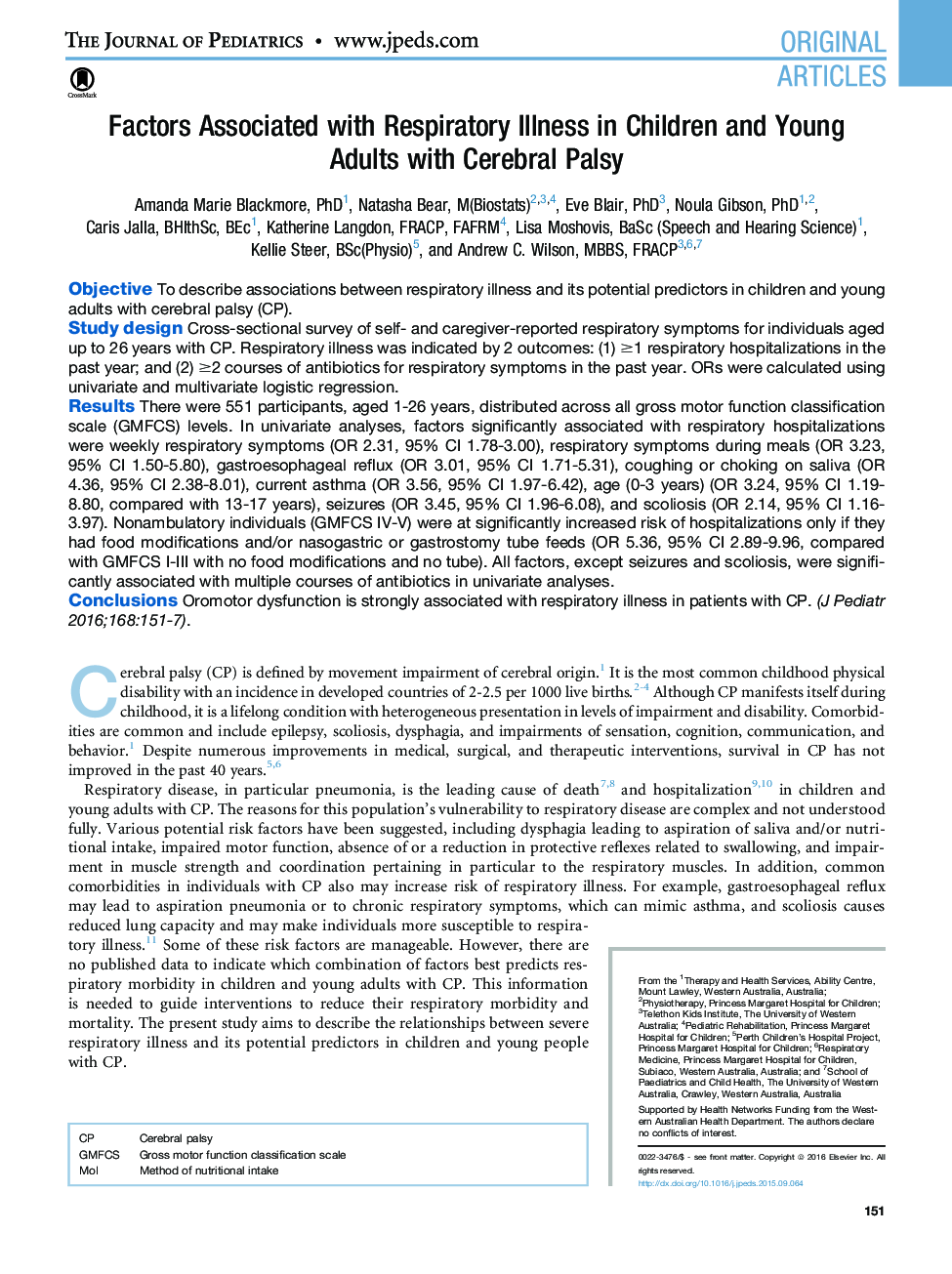| Article ID | Journal | Published Year | Pages | File Type |
|---|---|---|---|---|
| 6219890 | The Journal of Pediatrics | 2016 | 8 Pages |
ObjectiveTo describe associations between respiratory illness and its potential predictors in children and young adults with cerebral palsy (CP).Study designCross-sectional survey of self- and caregiver-reported respiratory symptoms for individuals aged up to 26 years with CP. Respiratory illness was indicated by 2 outcomes: (1) â¥1 respiratory hospitalizations in the past year; and (2) â¥2 courses of antibiotics for respiratory symptoms in the past year. ORs were calculated using univariate and multivariate logistic regression.ResultsThere were 551 participants, aged 1-26 years, distributed across all gross motor function classification scale (GMFCS) levels. In univariate analyses, factors significantly associated with respiratory hospitalizations were weekly respiratory symptoms (OR 2.31, 95% CI 1.78-3.00), respiratory symptoms during meals (OR 3.23, 95% CI 1.50-5.80), gastroesophageal reflux (OR 3.01, 95% CI 1.71-5.31), coughing or choking on saliva (OR 4.36, 95% CI 2.38-8.01), current asthma (OR 3.56, 95% CI 1.97-6.42), age (0-3 years) (OR 3.24, 95% CI 1.19-8.80, compared with 13-17 years), seizures (OR 3.45, 95% CI 1.96-6.08), and scoliosis (OR 2.14, 95% CI 1.16-3.97). Nonambulatory individuals (GMFCS IV-V) were at significantly increased risk of hospitalizations only if they had food modifications and/or nasogastric or gastrostomy tube feeds (OR 5.36, 95% CI 2.89-9.96, compared with GMFCS I-III with no food modifications and no tube). All factors, except seizures and scoliosis, were significantly associated with multiple courses of antibiotics in univariate analyses.ConclusionsOromotor dysfunction is strongly associated with respiratory illness in patients with CP.
